Sweetwater, TN 2017
Here is a quick look at the eclipse as seen from Sweetwater, TN August 21, 2017.
These maps show the path of totality through this part of Tennessee.
The blue line on the first map and the red line show the path of the centerline.
The closer you are to it the longer the eclipse lasts.
You see we chose wisely.


Preparations included a few eclipse related items.

The sky was nearly clear.
Only this one tiny cloud an hour before the eclipse started.
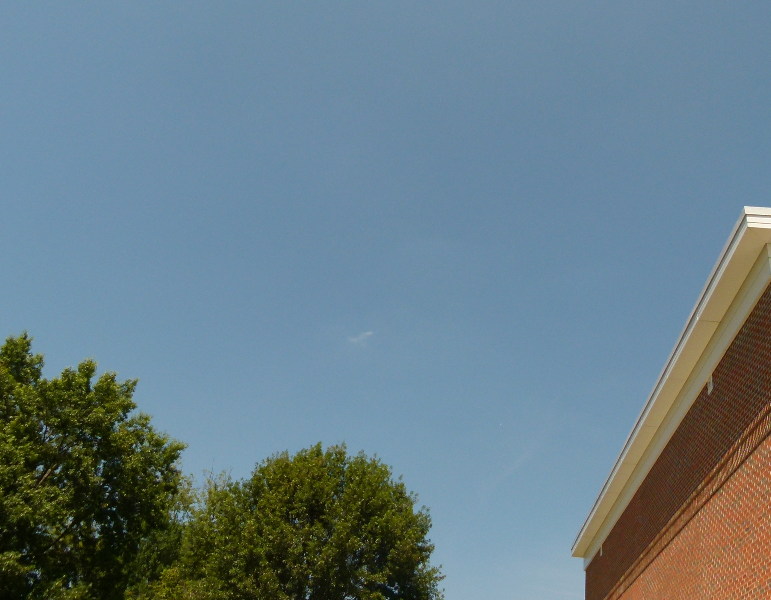
We selected the front yard of the Sweetwater Elementary School to view the eclipse.
It was away from the crowd in railroad park and close to the Carriage House where we were staying.
Here are the exact eclipse parameters where we were.
The moon was blocking part of the sun's disk for 2 hours, 54 minutes, and 36 seconds.
The duration of totality was 2 minutes, 36.9 seconds.

Pictures from Wendy.
Holes punched in a piece of cardboard project images of the partially eclipsed sun.

Here Jarrett is showing his t-shirt. Several of us got matching ones.
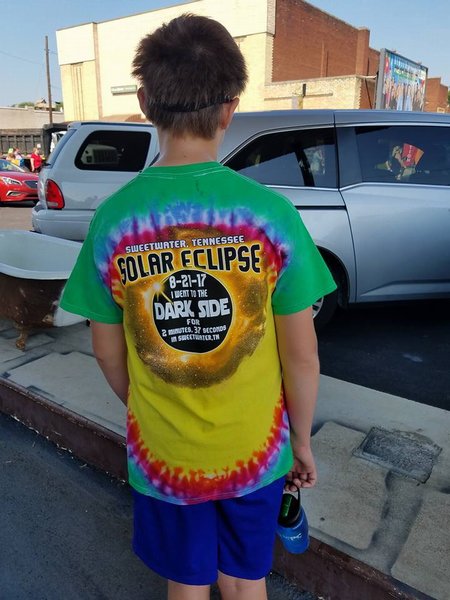
The sun is disappearing.
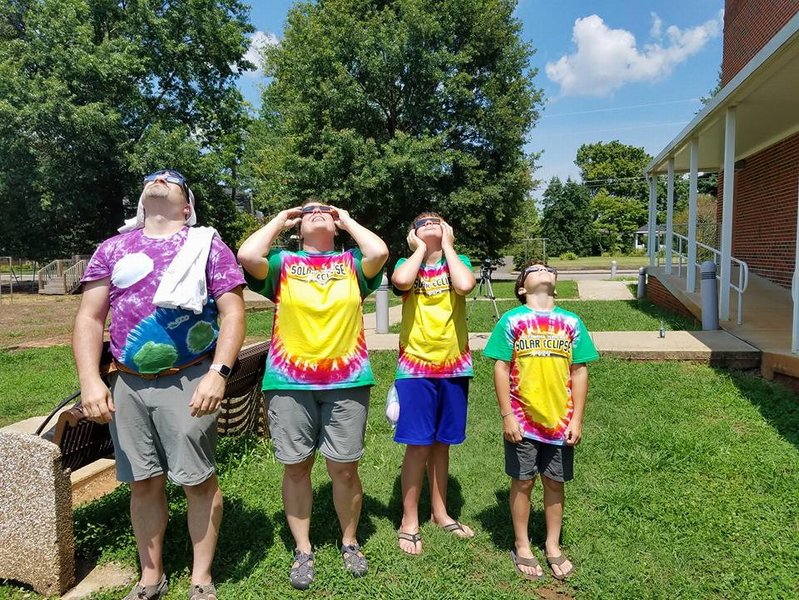
During totality the automatic street lights and a walkway light came on.
At this point we could hear the cicadas and evening bird songs.
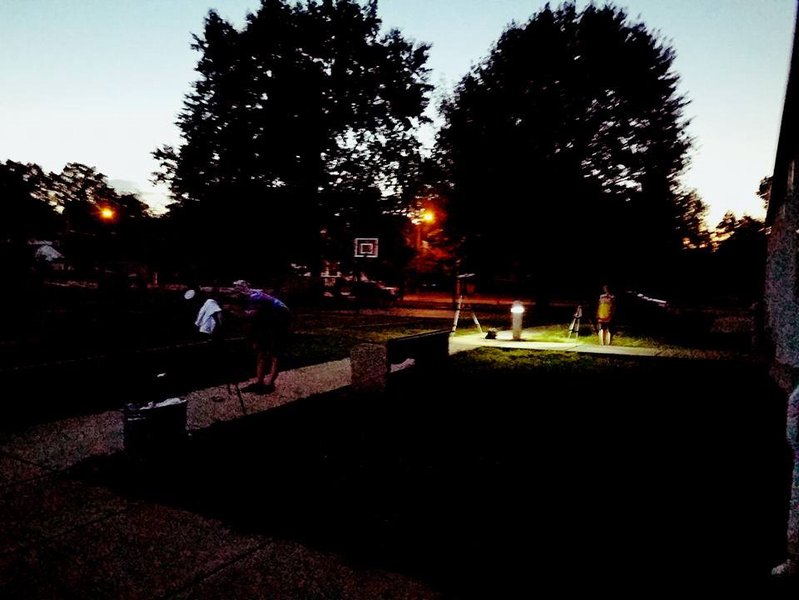
Following totality we used eyepiece projection from a small telescope to see the sun emerge from behind the moon.
The grid in the third picture was on the foamboard I used for the projection screen.
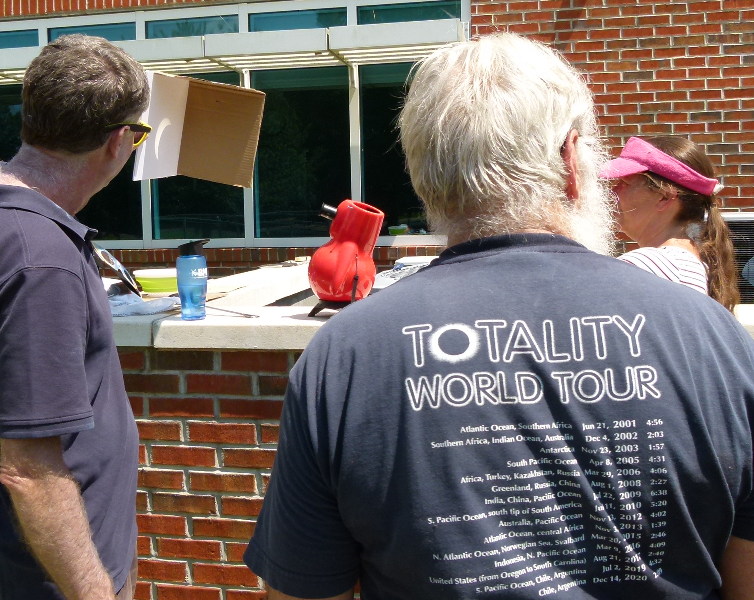
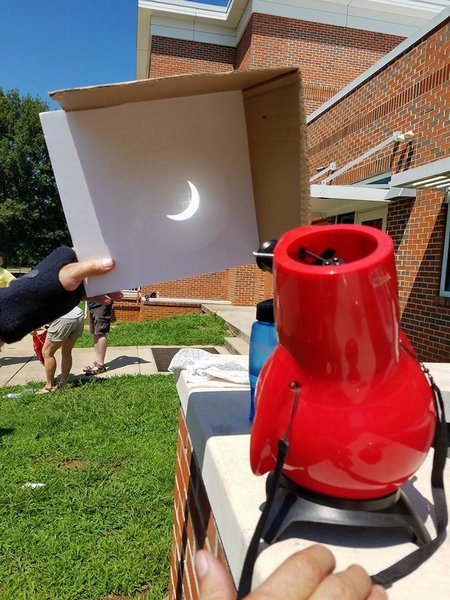

Soahn took these. High resolution versions are available at BestPhoto.Smugmug.com if you would like a copy.
A very light haze of cloud over the sun before the eclipse began was a bit worrying.
It wasn't enough to obscure the sunspots but...
We were concerned that as the temperature fell during the eclipse they would grow more dense and would obscure our view.

Moments after first contact and the clouds have cleared between us and the sun
Clouds in other parts of the sky did grow but we were lucky.
The notch on the upper right is the edge of the moon's disk starting to cover the sun.
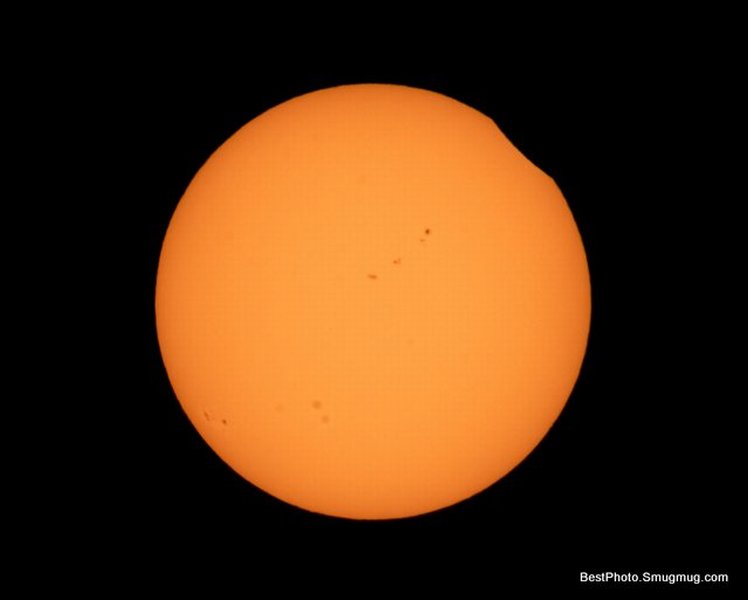
The moon continues its inexorable march across the sun.

Until finally we have totality.
The photosphere (apparent surface of
the sun) has been completely covered by the moon so now we can see the
ionized atmosphere, the corona.
It was even more brilliant than I remembered from other eclipses I have seen.
You can see the magnetic field's effect on the plasma making the rays along the field lines.
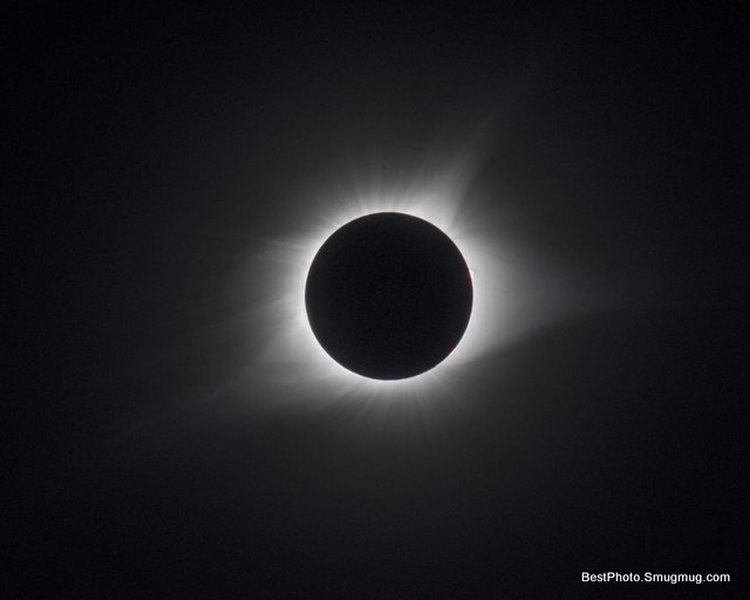
This picture shows the explosive red prominences that extend above the photosphere of the sun.

Totality is ending.
The diamond ring appears as the first bit of the sun emerges from behind the moon.
Prominences and corona are still visible for a moment.
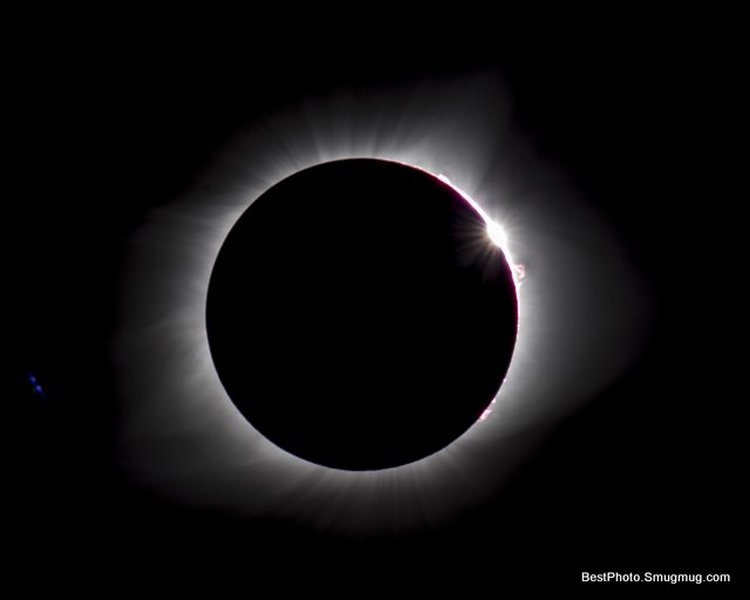
A little closer

A couple more pictures from Wendy.
Tarrin proudly showing his shot of the diamond ring.
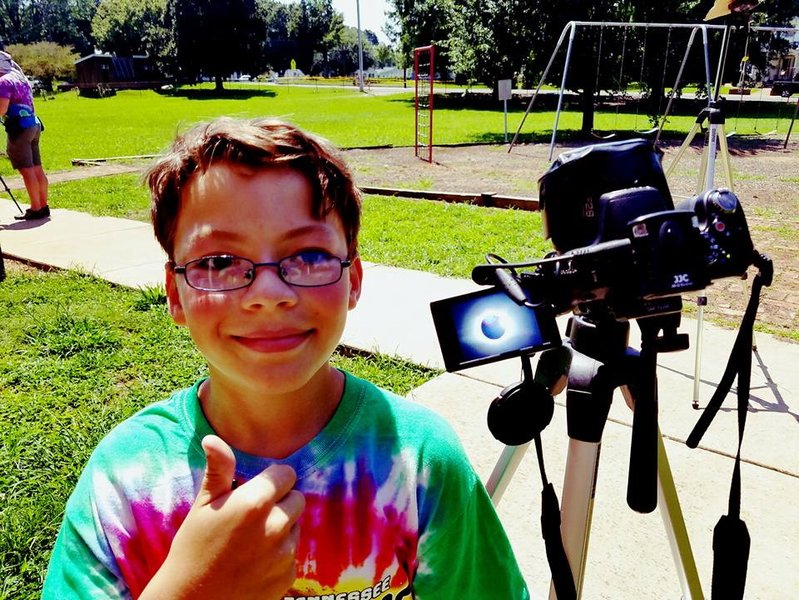
Jarrett got a great picture too.

Gaye and Matt Maggard, who are friends from just down the road took their grandson to Franklin, KY to see the eclipse there.
Here is what the Total Eclipse Viewer app gave them as their position and the eclipse timing just a few minutes before totality.
Because they weren't quite as close to the centerline totality lasted a few seconds less.
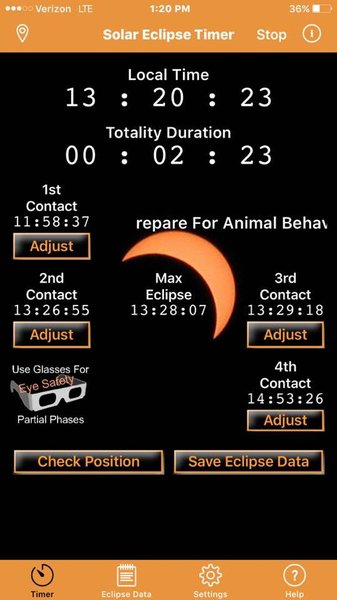
Gaps between the leaves of a tree provided multiple images of the partial eclipse.
Each gap acted like a pinhole camera.
Holes in a potato masher worked too but not as well.

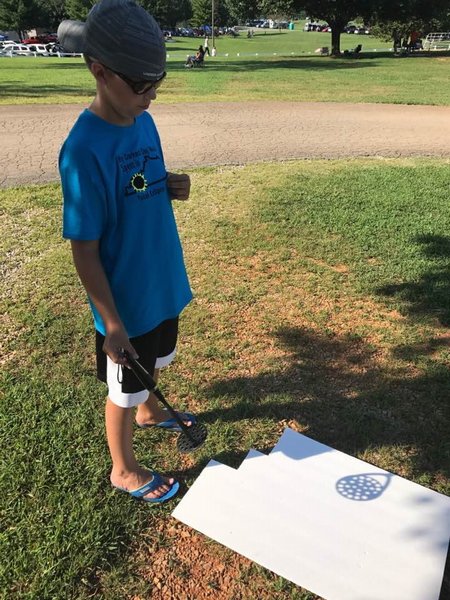
He mailed some postcards with the eclipse stamp so they would be canceled on eclipse day.
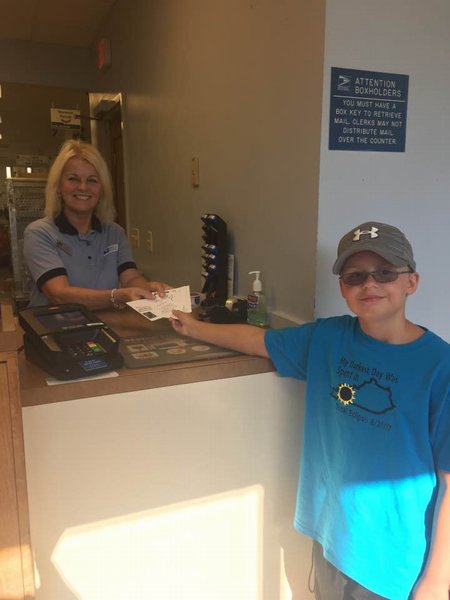
I should be getting some more of Tyler's pictures in a few days.
Check back to see them.
Here are some pictures that Jarrett took.
He caught the moment after first contact before anyone else did.
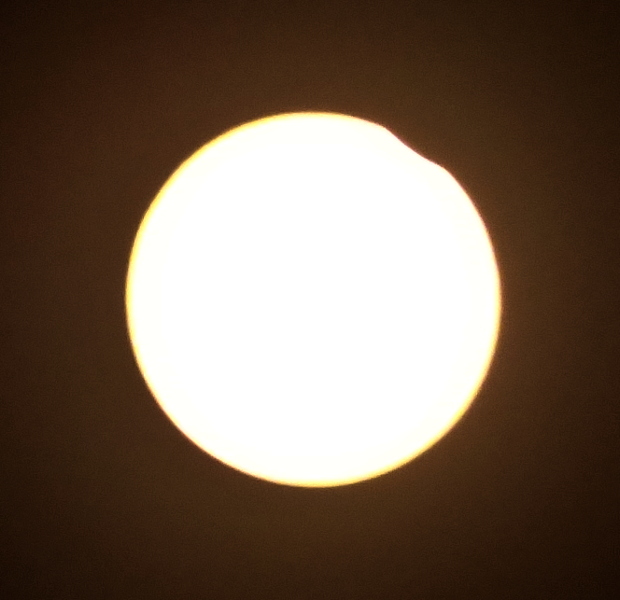
Then the moon moves over the sun.
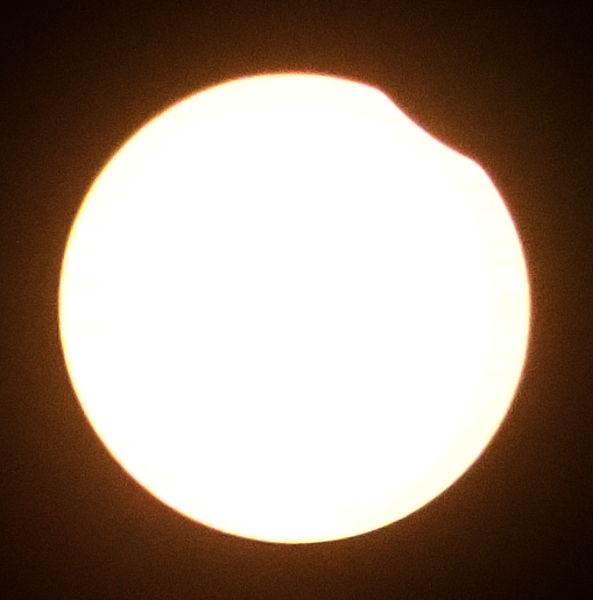


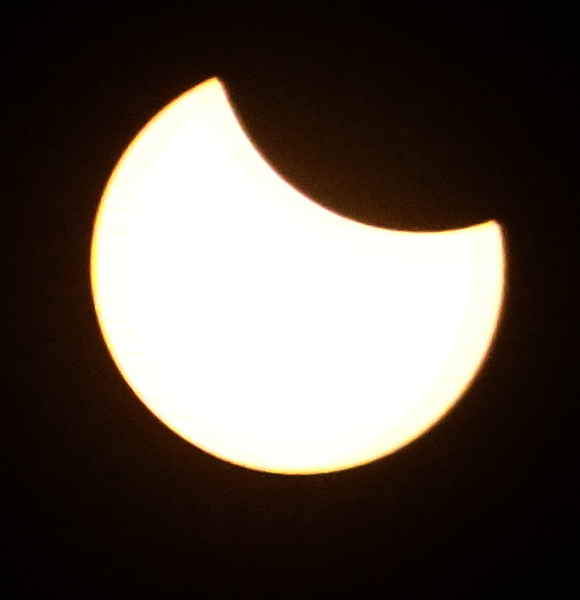
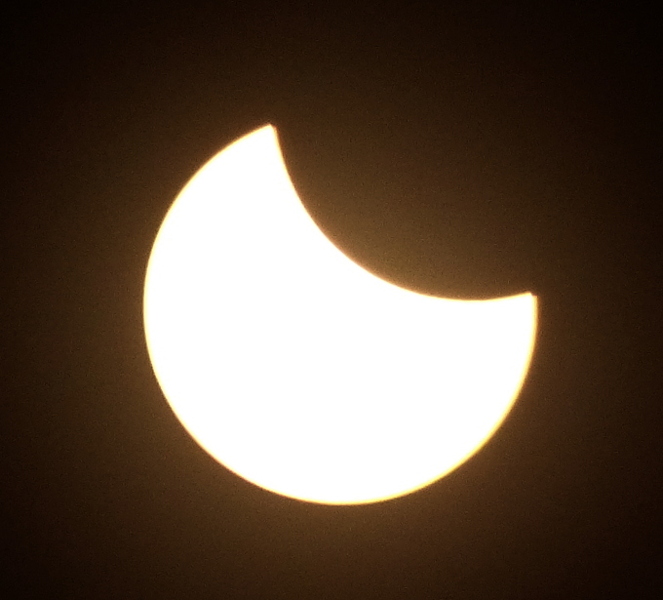
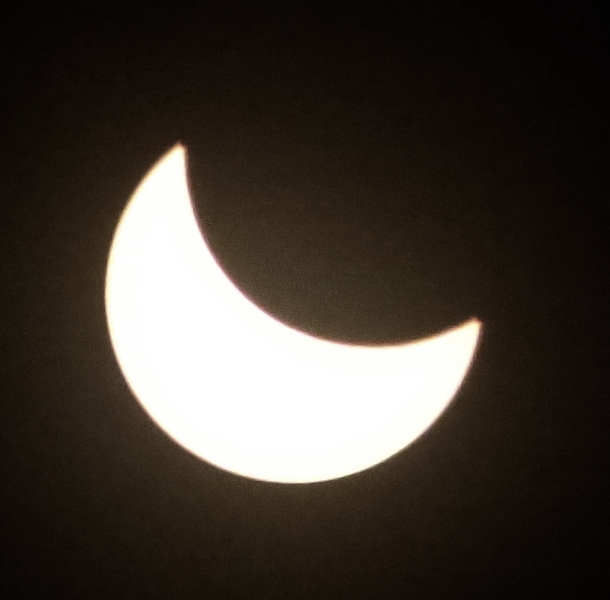
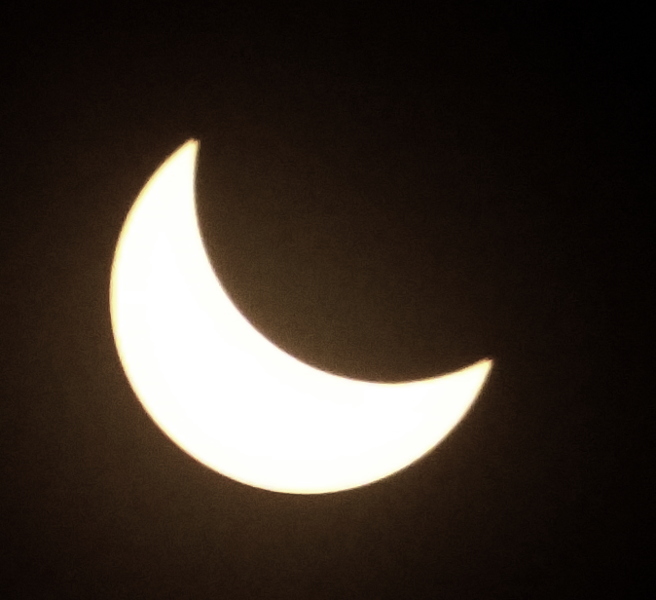




He projected his name in eclipse crescents.
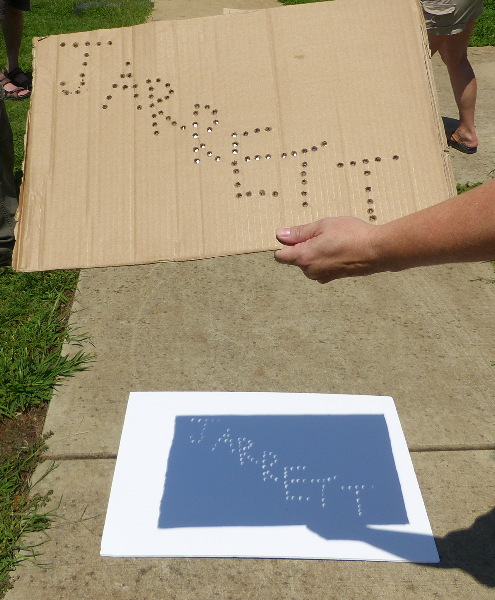

He also caught the shadow bands, AKA. snakes, before totality.
They are the very low contrast shadows running from lower left to the upper right in these pictures.
I enhanced the contrast so that you can see them (barely.)
We tried to take a video since they were easier to see as they moved but they were too low contrast to show up.

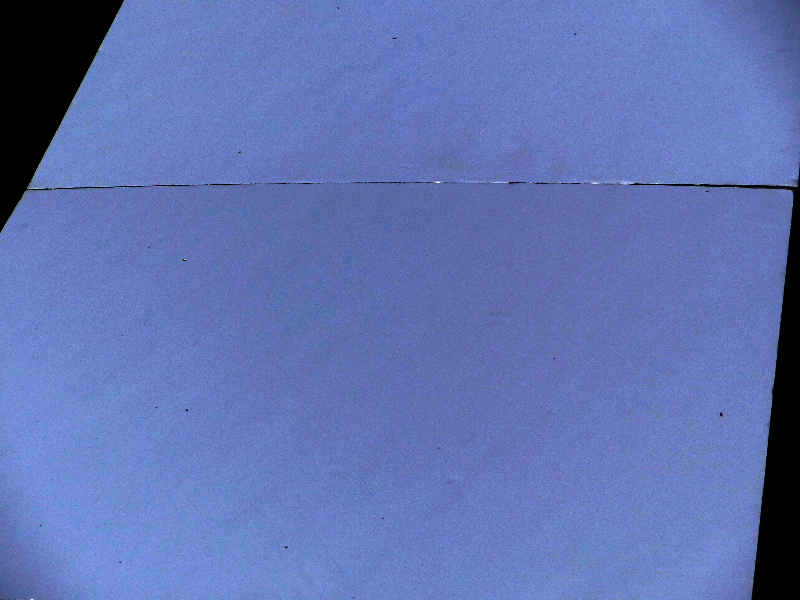
The diamond ring.
You can also see some red prominences.
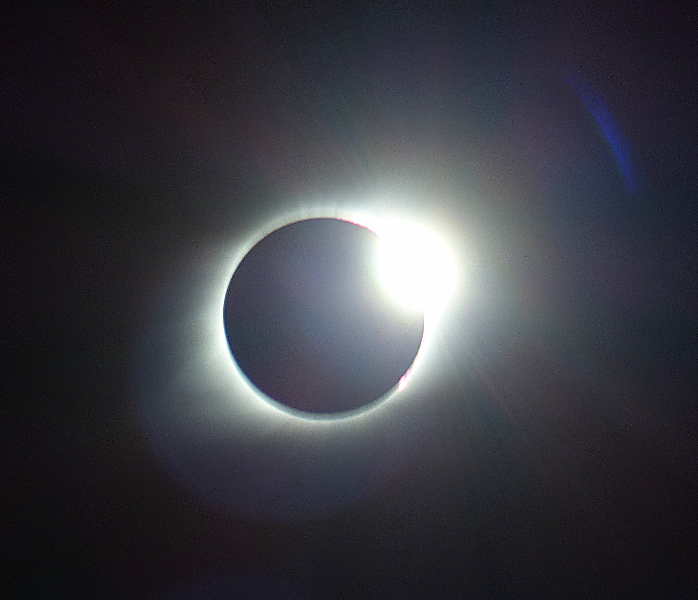
Totality.
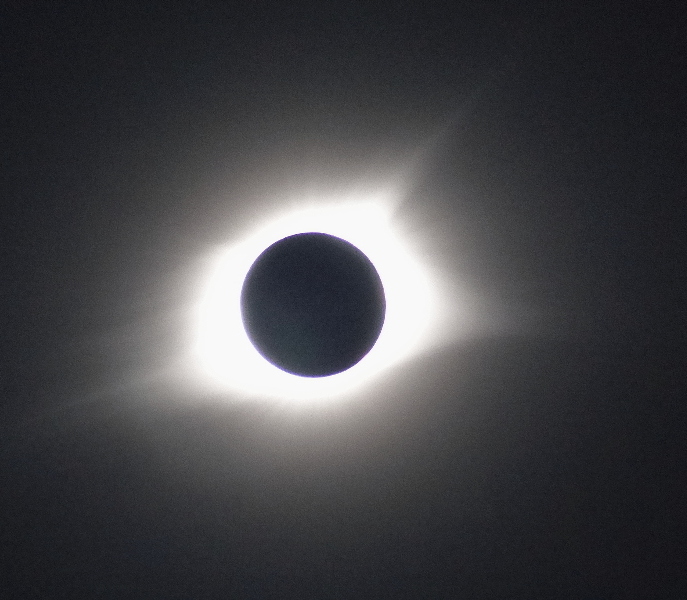
He also got the star Regulus.
It is the dot to the left of the eclipsed sun.
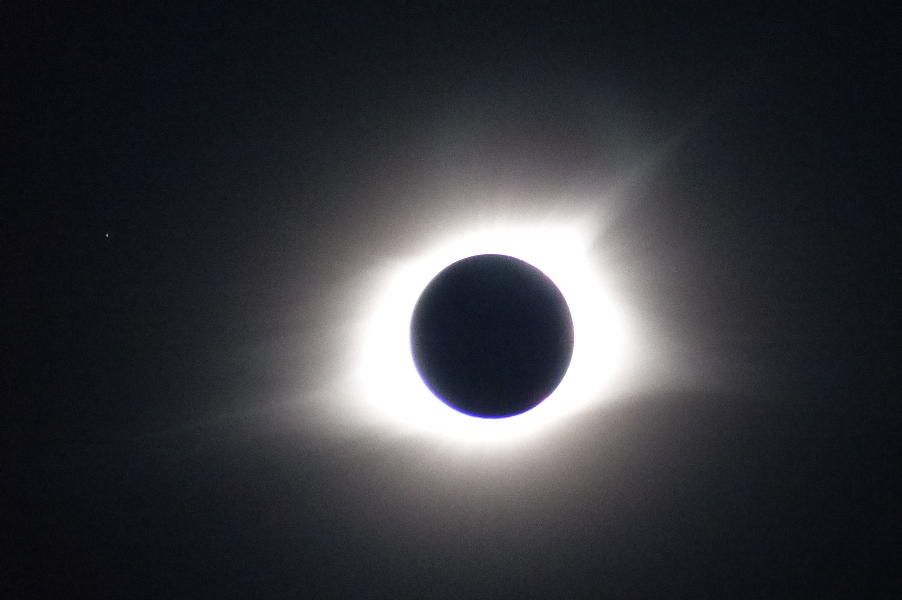
Denise, Wendy and some folks we met during the eclipse playing with shadows.
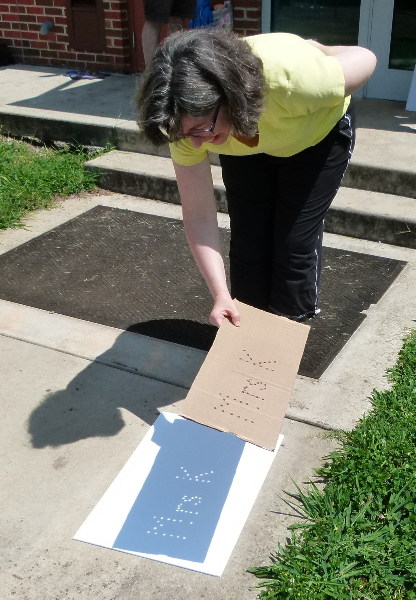

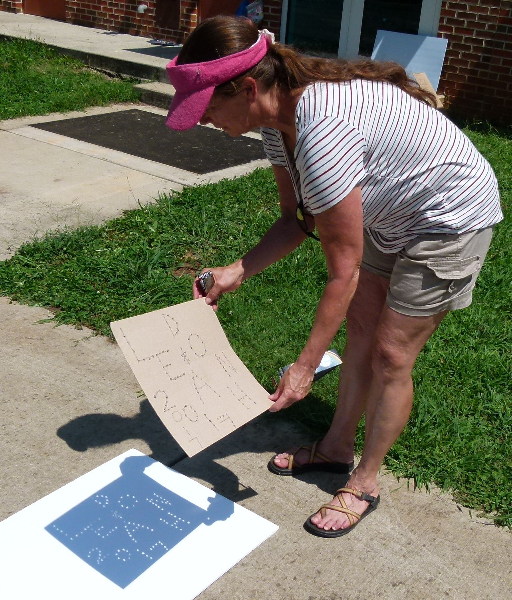



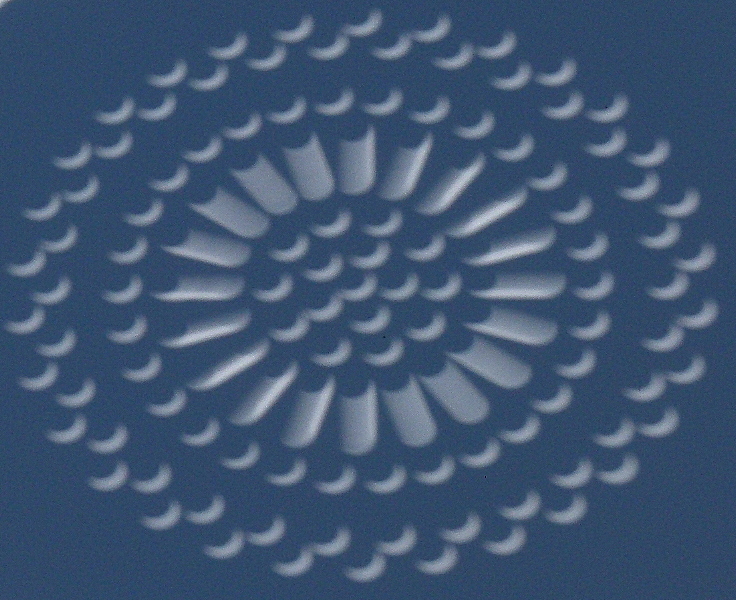
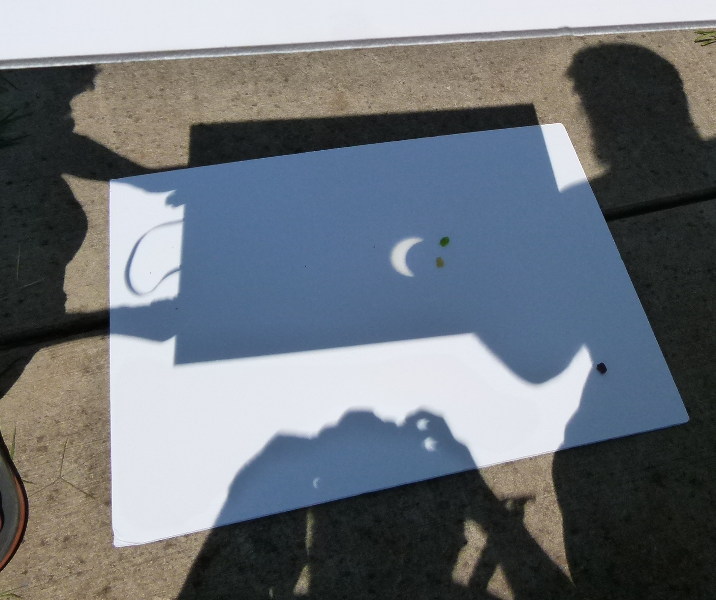

Same piece of cardboard before and after totality.
Do you see the difference?
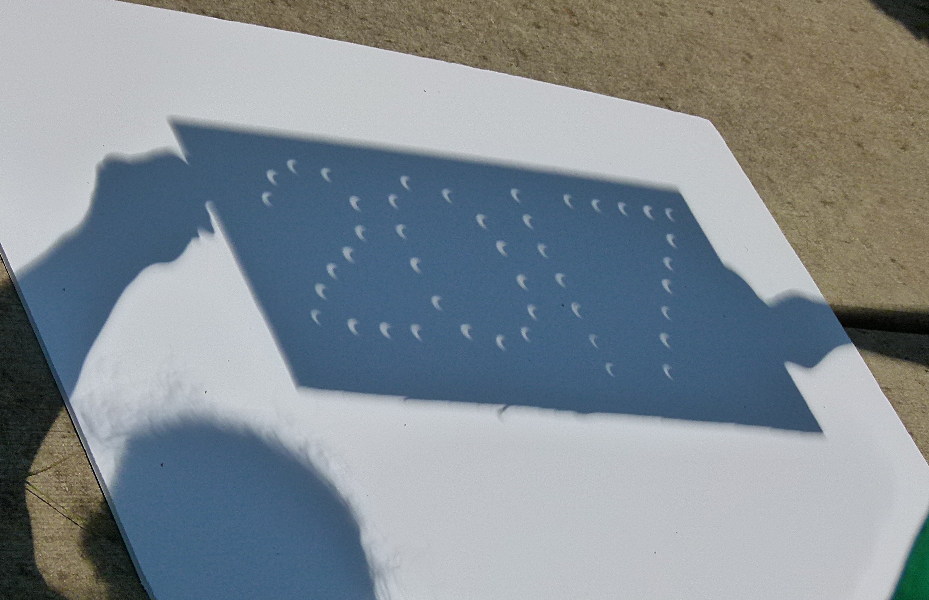

I spent my time looking at the eclipse rather than taking pictures, but I did get a few.
A few minutes prior to totality it was getting dark.
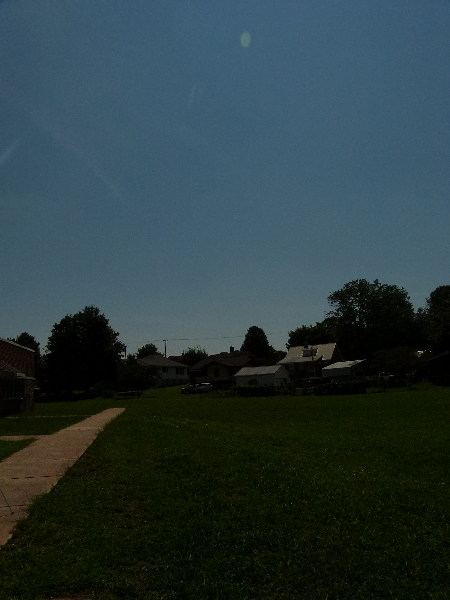
My diamond ring.
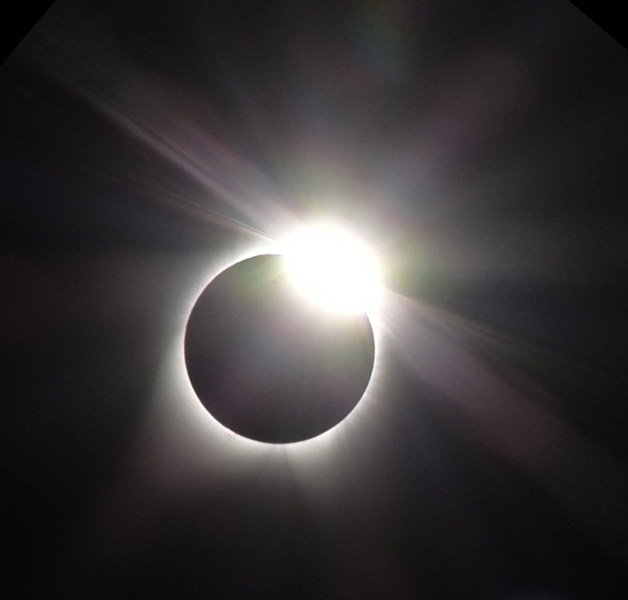
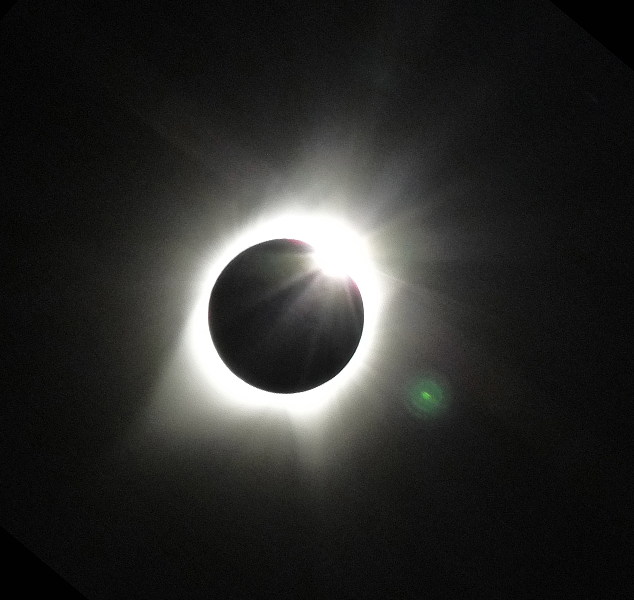
And totality
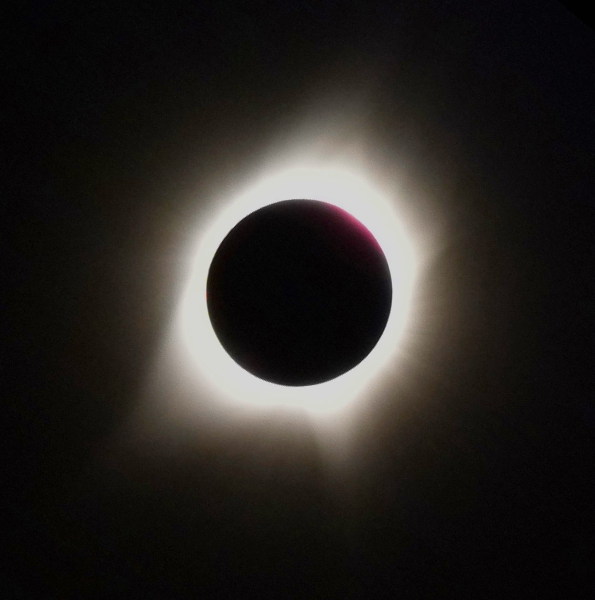
Venus appeared as the tiny dot to the right of the sun and a haze of clouds as well.
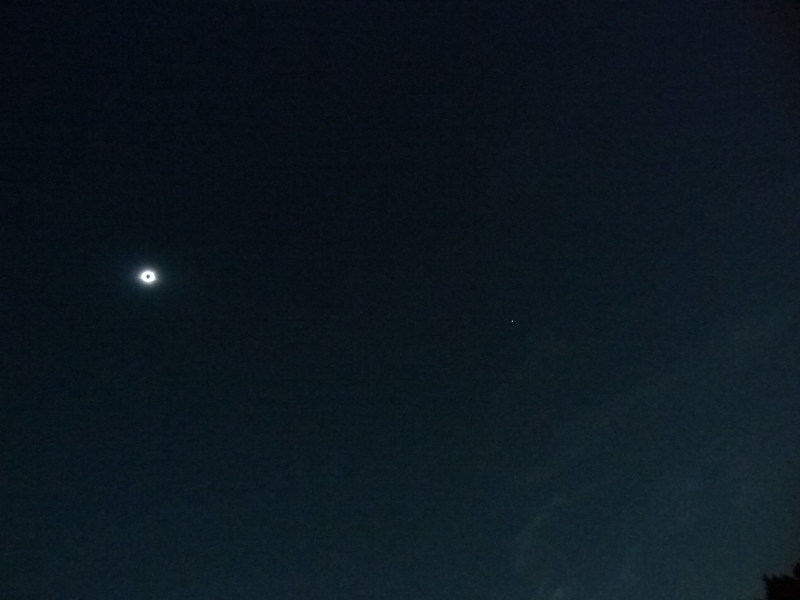
Our home weather station recorded how conditions changed over the eclipse.
At maximum 96% of the sun was obscured.
The red line on the top graph shows that the temperature dropped about 10 degrees.
The wind speed dropped to zero as is indicated by the blue line in the second graph with gusts shown in orange.
Nothing that can be attributed to the
eclipse can be seen in the next three graphs: wind direction,
precipitation, and barometric pressure.
The last two show notches as you would expect since they are for solar radiation and UV index.
I looked at the numeric values of
solar radiation and found that during the maximum partial eclipse 96%
of the sunlight was blocked.
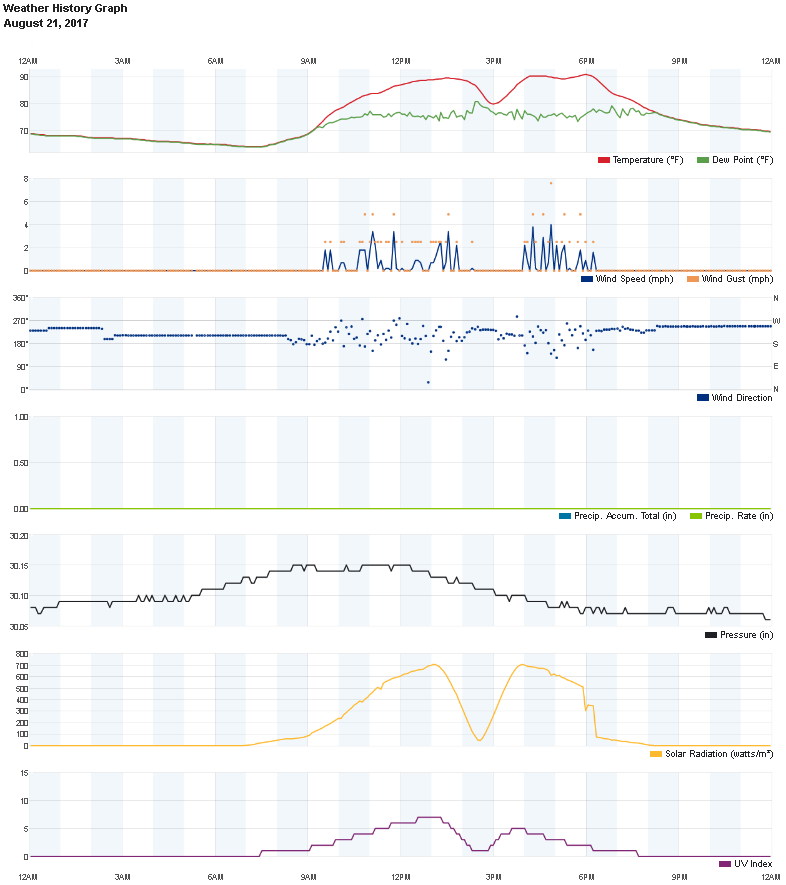
Randall Munroe the author XKCD where this image is found said,
" I watched from a beautiful nature
reserve in central Missouri, and it was--without exaggeration--the
coolest thing I've ever seen."

There will be more pictures as we sort through all the ones we took to find the best ones.
We have been to totality three times before.
These links will take you there.
South Pacific April 8, 2005
Greece March 29, 2006
Mongolia August 1, 2008
Go to our Science Fun
page
Go to our Travels page
Go to our Personal home
page
Go to our Community page
E-mail Nancy and Alan

www.mrtc.com/anvk web site by Alan Kuehner is licensed under a Creative Commons Attribution-Noncommercial-Share Alike 3.0 United States License.
Permissions beyond the scope of this license may be available at http://members.mrtc.com/anvk/permit.html.
























